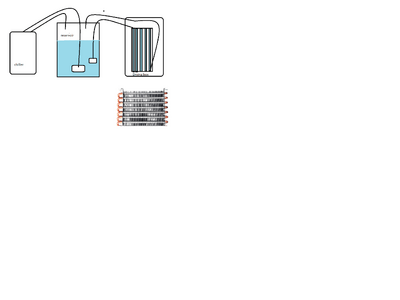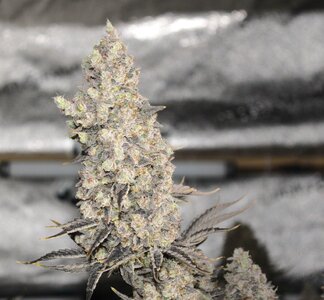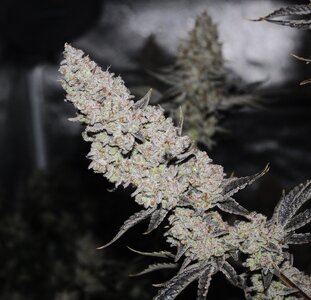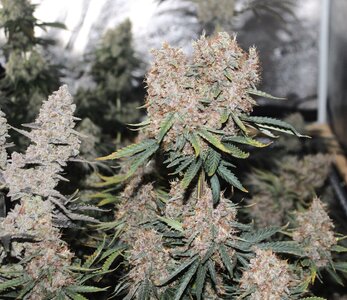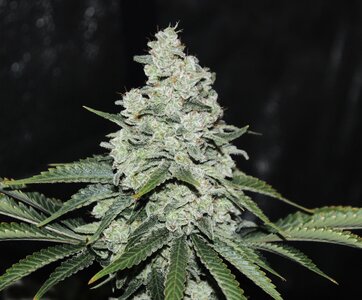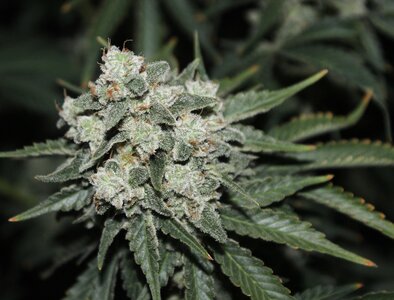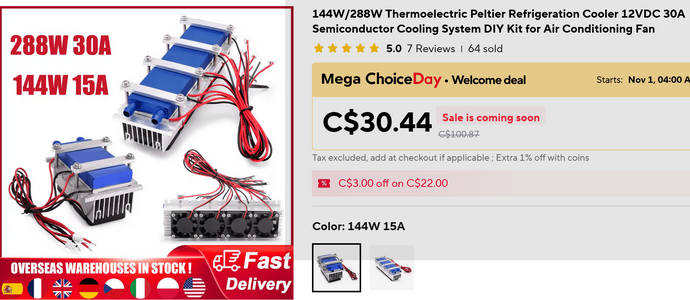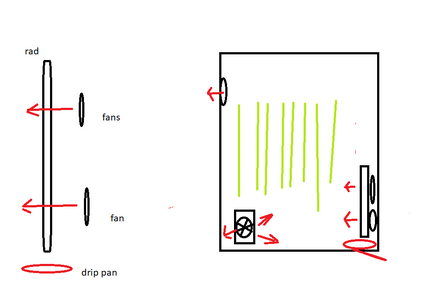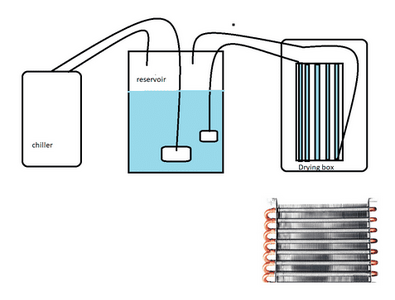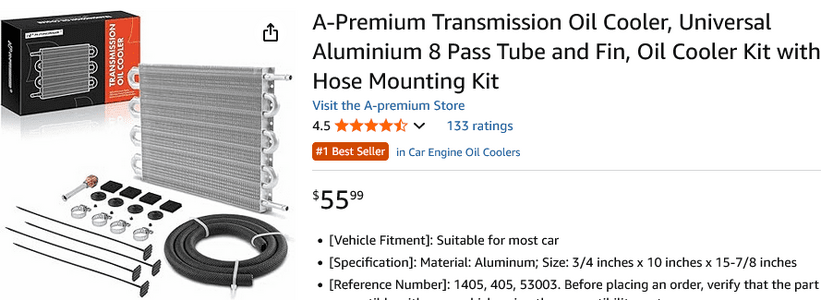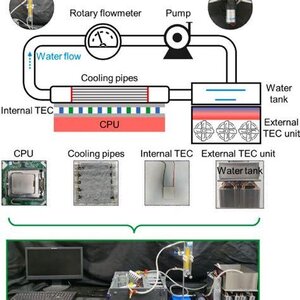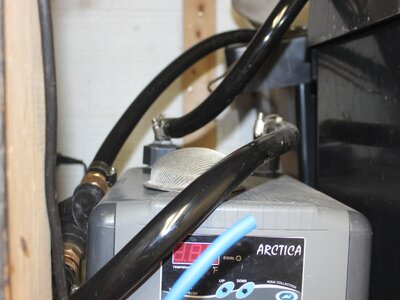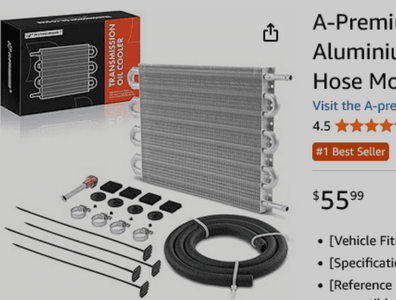Oct 22
I've been playing with Google's Ai mode in searches using some minerals and other ingredients to see what fits best. My earlier soil mixes by Ai's view could be overlapping and create toxicity by adding my GH nutes, Trying to mix Organic and synthetic growing. So I'll adjusted my approach by not adding the added amendments at transplant. I'll go with just my soil and perlight I didn't have any issues but I'll re arranged my mix and see how it goes.
My Ai search and results
vegging cannabis in ABS Greenworld VPW30 with 15% added worm castings,1tbs/gal wollsonite, 1/8 tsp/gal yucca powder, 1tbs/gal gypsum, 15%added perlite. watering with 1 mil /litre rapid start when needed. Transplanting into autopots with air domes at 1 month old into ABS Greenworld VPW30 with added 30% perlite then switching to General hydroponics Micro, Grow, Bloom, cal/mag, Diamond Nectar, Koolbloom and hyclean to help with salts
Based on your planned feeding schedule, here is a detailed breakdown of your cannabis grow, including potential benefits and considerations for each stage
.
Stage 1: Seedling and vegetative growth in amended soil
Your initial approach of using amended soil and a light nutrient solution is a solid strategy for healthy vegetative growth.
Soil mix:
ABS Greenworld VPW30: A peat-based mix with added perlite for high porosity and good aeration.
15% worm castings: Provides beneficial microbes and a wide range of nutrients in a slow-release form, enhancing overall soil life and nutrient uptake.
1 tbs/gal wollastonite: This calcium silicate mineral can strengthen plant cell walls, offer pest resistance, and help balance pH. However, as a rock mineral, it can take time to break down, so its effects may not be immediate.
1/8 tsp/gal yucca powder: Acts as a natural wetting agent (surfactant), helping water and nutrients penetrate the soil more evenly. This prevents dry spots and improves the efficiency of your watering. It also helps flush out excess salts and can mitigate drought stress.
1 tbs/gal gypsum: A source of calcium and sulfur that can improve soil structure and help plants better absorb water. It also helps manage potential salt buildup from the rapid start.
15% perlite: Provides increased drainage and aeration to the root zone, which is critical for healthy root development and preventing waterlogged conditions.
Feeding:
1 ml/litre Rapid Start: This is an excellent choice for the vegetative stage. As a root stimulant, it helps seedlings and young plants develop strong, healthy root systems, which is the foundation for a vigorous plant.
Watering "when needed": This is the correct approach for manual watering. You should allow the soil to dry out somewhat between waterings to ensure the roots get plenty of oxygen.
Stage 2: Transplanting and switching to autopots
The transition to autopots at one month old is a good time to move plants to their permanent home, and your nutrient plan is well-suited for this system.
Autopot setup:
30% perlite in ABS Greenworld VPW30: Your use of a lighter, fluffier mix with additional perlite (30% total) is highly recommended for autopot systems. This allows for better capillary action and aeration around the roots, which is crucial for bottom-feeding systems.
Air domes: These will provide critical oxygen directly to the root zone, which is especially beneficial when using a constant feed system like autopots. This can lead to more aggressive root growth and higher yields.
Activation: Wait 1–2 weeks after transplanting before turning on the air domes to give the plant time to establish in its new pot. Run the air domes during the light cycle.
Nutrient plan:
General Hydroponics FloraSeries (Micro, Grow, Bloom): This is a popular and effective 3-part nutrient system for cannabis. Follow a grower-recommended feed chart for autopots, which often requires lower PPMs than for hand-fed plants.
Cal/Mag: Essential for plants grown with filtered or reverse osmosis (RO) water. Even with tap water, using a Cal/Mag supplement can prevent deficiencies, which are common in autopot systems.
Diamond Nectar: A humic acid supplement that enhances nutrient uptake and transport. It can be particularly useful in a recirculating or constant-feed system to ensure efficient use of your added nutrients.
KoolBloom: A bloom booster with higher phosphorus and potassium. Use this during the flowering stage as directed to encourage dense, healthy flower development.
Hyclean: This is likely a reference to a flush product, which is a good idea when dealing with high-salt nutrients. This will help prevent mineral buildup in your system and media. Regular flushing or use of a preventative like Hyclean is crucial for long-term health in autopot systems.
Key takeaways and recommendations
PPM Monitoring: Get a reliable TDS/PPM meter to monitor your nutrient solution, especially when transitioning to the General Hydroponics line. Many experienced growers suggest starting with a lower PPM than bottle recommendations, especially for the constant feed of autopots.
pH Management: While autopots can be forgiving with pH drift, monitor the pH of your reservoir and ensure it stays within the correct range for cannabis (around 5.8–6.4).
Salt Management: The combination of gypsum, yucca powder, and a dedicated flush product like Hyclean should effectively manage salt buildup in your system.
Transition Period: Allow for a short transition period after transplanting before you activate the autopots and air domes. Manually top-feed lightly for the first week or two to let the plant acclimate and develop its root system.
Based on your planned feeding schedule, here is a detailed breakdown of your cannabis grow, including potential benefits and considerations for each stage
.
Stage 1: Seedling and vegetative growth in amended soil
Your initial approach of using amended soil and a light nutrient solution is a solid strategy for healthy vegetative growth.
Soil mix:
- ABS Greenworld VPW30: A peat-based mix with added perlite for high porosity and good aeration.
- 15% worm castings: Provides beneficial microbes and a wide range of nutrients in a slow-release form, enhancing overall soil life and nutrient uptake.
- 1 tbs/gal wollastonite: This calcium silicate mineral can strengthen plant cell walls, offer pest resistance, and help balance pH. However, as a rock mineral, it can take time to break down, so its effects may not be immediate.
- 1/8 tsp/gal yucca powder: Acts as a natural wetting agent (surfactant), helping water and nutrients penetrate the soil more evenly. This prevents dry spots and improves the efficiency of your watering. It also helps flush out excess salts and can mitigate drought stress.
- 1 tbs/gal gypsum: A source of calcium and sulfur that can improve soil structure and help plants better absorb water. It also helps manage potential salt buildup from the rapid start.
- 15% perlite: Provides increased drainage and aeration to the root zone, which is critical for healthy root development and preventing waterlogged conditions.
Feeding:
- 1 ml/litre Rapid Start: This is an excellent choice for the vegetative stage. As a root stimulant, it helps seedlings and young plants develop strong, healthy root systems, which is the foundation for a vigorous plant.
- Watering "when needed": This is the correct approach for manual watering. You should allow the soil to dry out somewhat between waterings to ensure the roots get plenty of oxygen.
Stage 2: Transplanting and switching to autopots
The transition to autopots at one month old is a good time to move plants to their permanent home, and your nutrient plan is well-suited for this system.
Autopot setup:
- 30% perlite in ABS Greenworld VPW30: Your use of a lighter, fluffier mix with additional perlite (30% total) is highly recommended for autopot systems. This allows for better capillary action and aeration around the roots, which is crucial for bottom-feeding systems.
- Air domes: These will provide critical oxygen directly to the root zone, which is especially beneficial when using a constant feed system like autopots. This can lead to more aggressive root growth and higher yields.
- Activation: Wait 1–2 weeks after transplanting before turning on the air domes to give the plant time to establish in its new pot. Run the air domes during the light cycle.
Nutrient plan:
- General Hydroponics FloraSeries (Micro, Grow, Bloom): This is a popular and effective 3-part nutrient system for cannabis. Follow a grower-recommended feed chart for autopots, which often requires lower PPMs than for hand-fed plants.
- Cal/Mag: Essential for plants grown with filtered or reverse osmosis (RO) water. Even with tap water, using a Cal/Mag supplement can prevent deficiencies, which are common in autopot systems.
- Diamond Nectar: A humic acid supplement that enhances nutrient uptake and transport. It can be particularly useful in a recirculating or constant-feed system to ensure efficient use of your added nutrients.
- KoolBloom: A bloom booster with higher phosphorus and potassium. Use this during the flowering stage as directed to encourage dense, healthy flower development.
- Hyclean: This is likely a reference to a flush product, which is a good idea when dealing with high-salt nutrients. This will help prevent mineral buildup in your system and media. Regular flushing or use of a preventative like Hyclean is crucial for long-term health in autopot systems.
Key takeaways and recommendations
- PPM Monitoring: Get a reliable TDS/PPM meter to monitor your nutrient solution, especially when transitioning to the General Hydroponics line. Many experienced growers suggest starting with a lower PPM than bottle recommendations, especially for the constant feed of autopots.
- pH Management: While autopots can be forgiving with pH drift, monitor the pH of your reservoir and ensure it stays within the correct range for cannabis (around 5.8–6.4).
- Salt Management: The combination of gypsum, yucca powder, and a dedicated flush product like Hyclean should effectively manage salt buildup in your system.
- Transition Period: Allow for a short transition period after transplanting before you activate the autopots and air domes. Manually top-feed lightly for the first week or two to let the plant acclimate and develop its root system.




